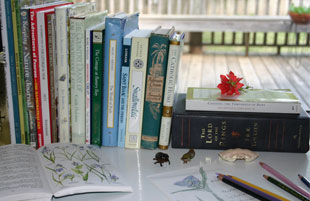dale45039
Forum Newbie

Joined: July 21 2009
Online Status: Offline
Posts: 43
|
| Posted: March 09 2011 at 9:25am | IP Logged
|
 |
|
(Ash Wednesday)
IT IS related that King Louis XIV of France, shortly after his ascent to the throne, stood at an open window in his palace and silently admired the simple beauty of the Church of St. Denis, standing some distance away. A servant ventured to remark that all the king's ancestors lay buried in that church and that, doubtless, it would also be His Majesty's last resting place. The very next day the king ordered another palace built so that the Church of St. Denis would be hidden from his view.
It is a weakness in our nature to try to soften the full force of the disconcerting truth that we all must die. We do our best to keep from dwelling too much on this fact lest its morbidity depress us. Expensive caskets with their silk linings, the flowers, the green imitation grass thrown over the newly turned soil in the cemetery, are all designed to pamper our squeamishness about death.
Holy Mother the Church is much more realistic. She has her priests bless ashes, and then place some of these ashes on the foreheads of her children, saying at the same time, "Remember, man, thou art but dust, and into dust thou shalt return."
Sin and death go together. Because Adam and Eve sinned in the Garden of Eden, they had to submit to this dreadful penalty, and in like manner, all their descendants. To remind us of this grim fact, the Church places ashes on the foreheads of her children on each Ash Wednesday, saying, "Remember, man, thou art but dust, and into dust thou shalt return."
There is still another death which the Church would remind us of today - the death of our vices and concupiscences through mortification and penance. The word mortification comes from two Latin words meaning �To make death"; and so in asking us to mortify ourselves during Lent, the Church begs us to deaden our appetites and passions by discipline so that we might live supernatural lives.
The imposition of ashes, then, is not only symbolic of death but of penance and mortification too. Since there would be no death if there had not been sin, so there can be no supernatural life without mortification and penance. The ashes on our foreheads should so remind us, since holy men like Job and David associated ashes with penance, and the Church has been doing the same thing for almost 2000 years.
So you see, life, death, mortification, and penance are all brought to our minds by the simple but deeply meaningful ceremony of the imposition of the blessed ashes. Could a more effective way be found to signify the beginning of the penitential season of Lent? The external application of the ashes to our foreheads will be useless and meaningless unless and until we resolve in our hearts to use the forty days ahead to do penance in reparation for our past failures and practice mortification to condition our souls and bodies for the struggles ahead.
Spend some time today in considering the fact that you will sooner or later die and that everyone and everything you hold near and dear to you must be left behind. "To fear death before it comes,� says St. Gregory, �is to conquer it when it comes."
Say often this prayer of David: "O Lord, make me know my end, and what is the number of my days that I may know what is wanting in me" (Ps. 38:5).
=====================================================
REFLECTIONS on the PASSION by Charles Hugo Doyle 1956
|


 Topic: Ash Wednesday Reflection
Topic: Ash Wednesday Reflection





